On View
‘You Really Don’t See Nude Forms Anymore’: Artist Sarah Meyohas on Her Surreal New Holographic Portraits of the Female Body
The artist's new show at Marianne Boesky marks her first solo exhibition in the U.S.
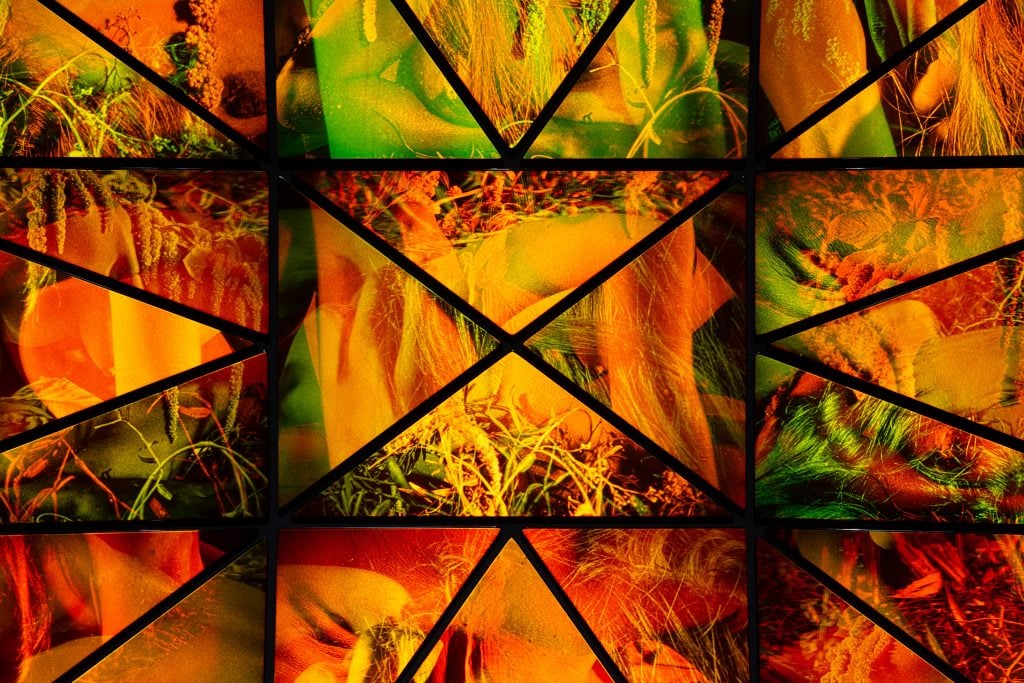
The artist's new show at Marianne Boesky marks her first solo exhibition in the U.S.

Min Chen

Entering Sarah Meyohas’s new show at Marianne Boesky Gallery, you might be forgiven for thinking the artist has simply installed a number of pitch-black glass panes across the gallery. Step in front of these mirrored panels, though, and they reveal mesmeric three-dimensional images—a cluster of plants here, a fragment of a naked female form there—all tinged with iridescent hues. No, it’s not digital trickery, but the result of Meyohas’s continued adventures into holographic technology.
These new works are the “Rolls Royce version” of holograms, making up Meyohas’s ongoing “Interferences” series (2021–). They capture her film photographs of unearthly flora, offering a head-on collision between nature and technology. (Meyohas also considered water droplets and spiderwebs as subjects, except the former was difficult to execute and she did not want to raise spiders for the latter.)
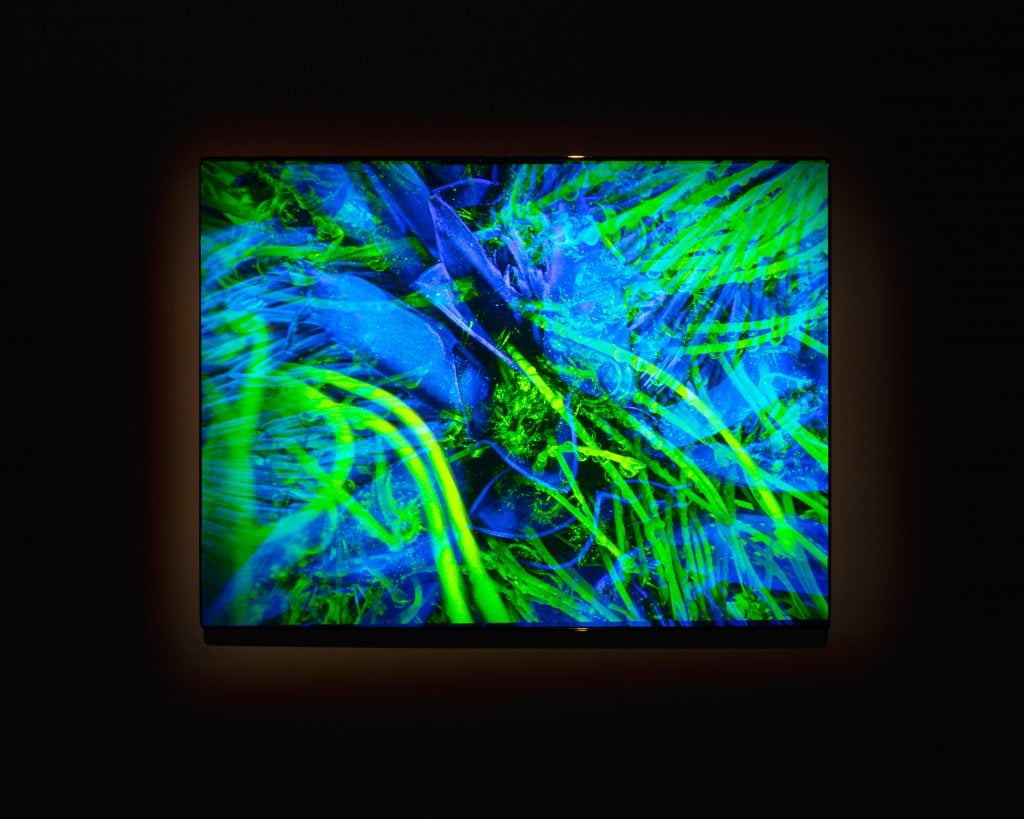
Sarah Meyohas, Interference #17 (2023) . Photo: Lance Brewer. © Sarah Meyohas. Courtesy of the artist and Marianne Boesky Gallery, New York and Aspen.
“I didn’t want to put in a pattern. I didn’t want to put in something that could be repeated,” she told Artnet News. “It’s more about seeing the texture of life and living matter, and focusing on that up close.”
The centerpiece of the exhibition is a 14-foot-long, multi-panel hologram, titled Interference #18 (2023). The 30 trapezoid glass panes variously carry visuals of plant matter and snatches of a naked female body, with the entanglement between the biotic and technologic taking an abstract, sensual turn.
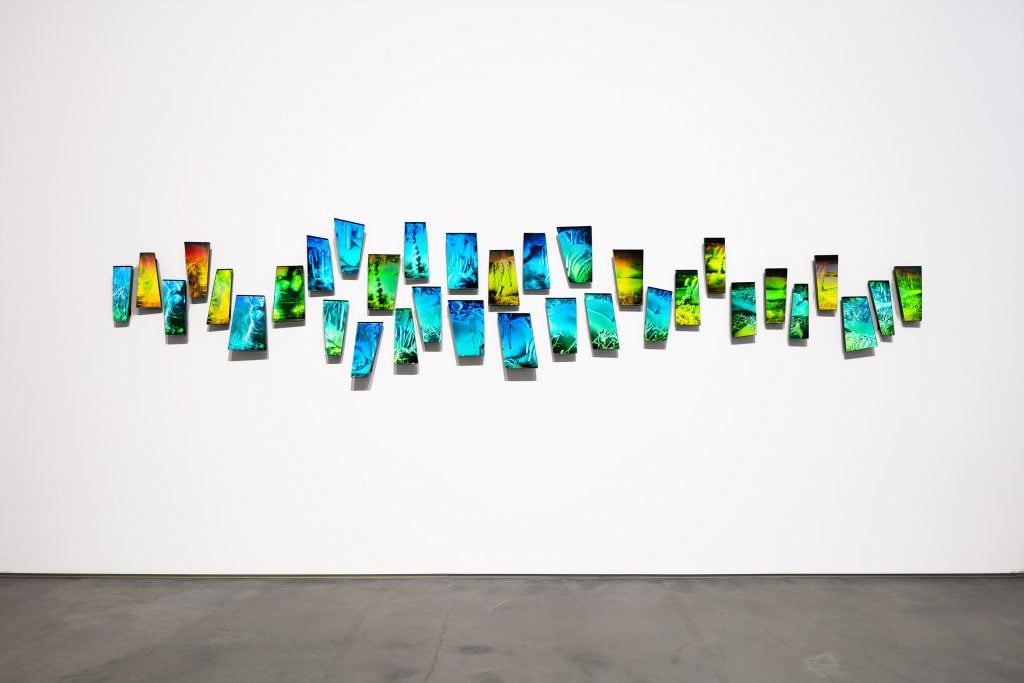
Sarah Meyohas, Interference #18 (2023). Photo: Lance Brewer. © Sarah Meyohas. Courtesy of the artist and Marianne Boesky Gallery, New York and Aspen.
Meyohas’s newfound interest in anatomy is also captured in Diffraction #1 (2023), a sculptural form that’s part of a new series. Across the work’s conjoined glass windows can be glimpsed three-breasted female torsos—a surreal vision that emerges from Meyohas’s observation that “you really don’t see nude forms anymore,” whether in galleries or Hollywood movies. “I like putting bodies in spaces they’re not supposed to be,” she added.
The sculpture itself is a diffraction grating, a device with multi-lined or grooved surfaces that split light into its different wavelengths or colors. The resulting vibrant tones seen by the human eye are known as structural color, an occurrence that Meyohas has lately found “religiously appealing.”
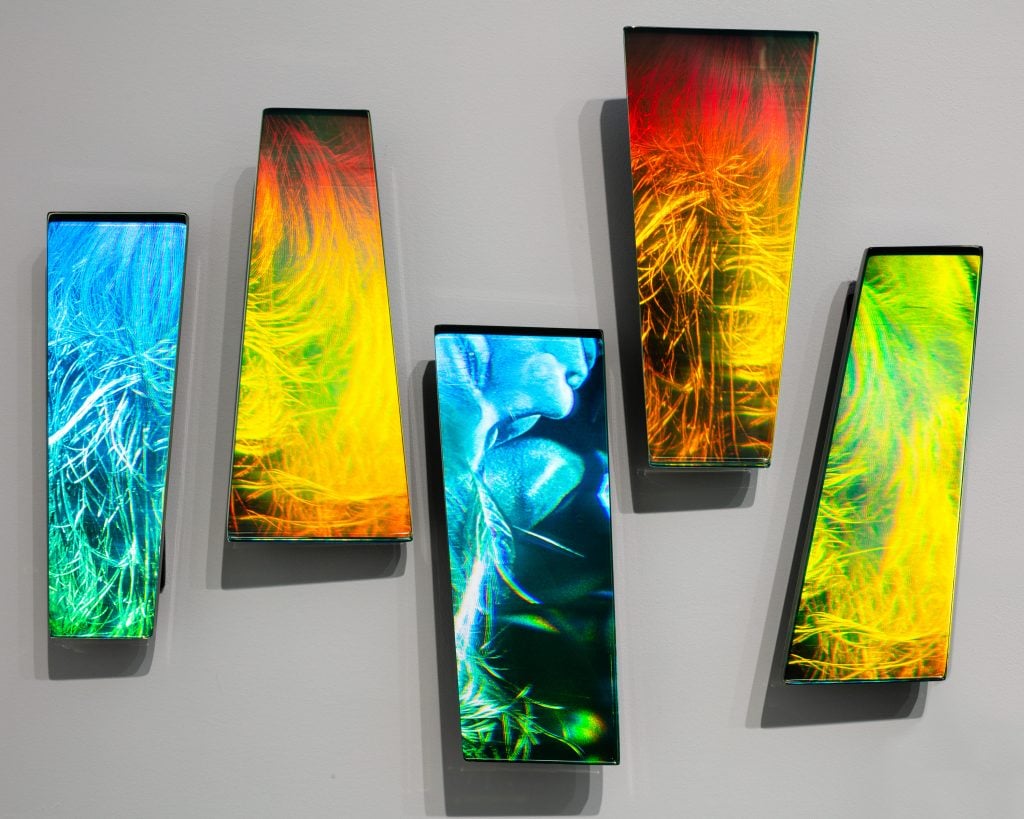
Sarah Meyohas, detail of Interference #18 (2023). Photo: Lance Brewer. © Sarah Meyohas. Courtesy of the artist and Marianne Boesky Gallery, New York and Aspen.
“Essentially, any color that changes based on your angle of viewing is structural color,” she said. “The idea that a regular shape or form at nanoscale can refract and create light and color on the visible spectrum, and the fact that light is dependent on your position just felt so beautiful to me.”
Her first diffraction grating has been created by machine-etching millions of microscopic lines onto glass at a depth of 600 nanometers. So meticulous is this operation—emerging from “our desire to encode more and more information in smaller and smaller spots,” Meyohas said—that in effect, “we can create structural color that is more precise than what nature creates.”
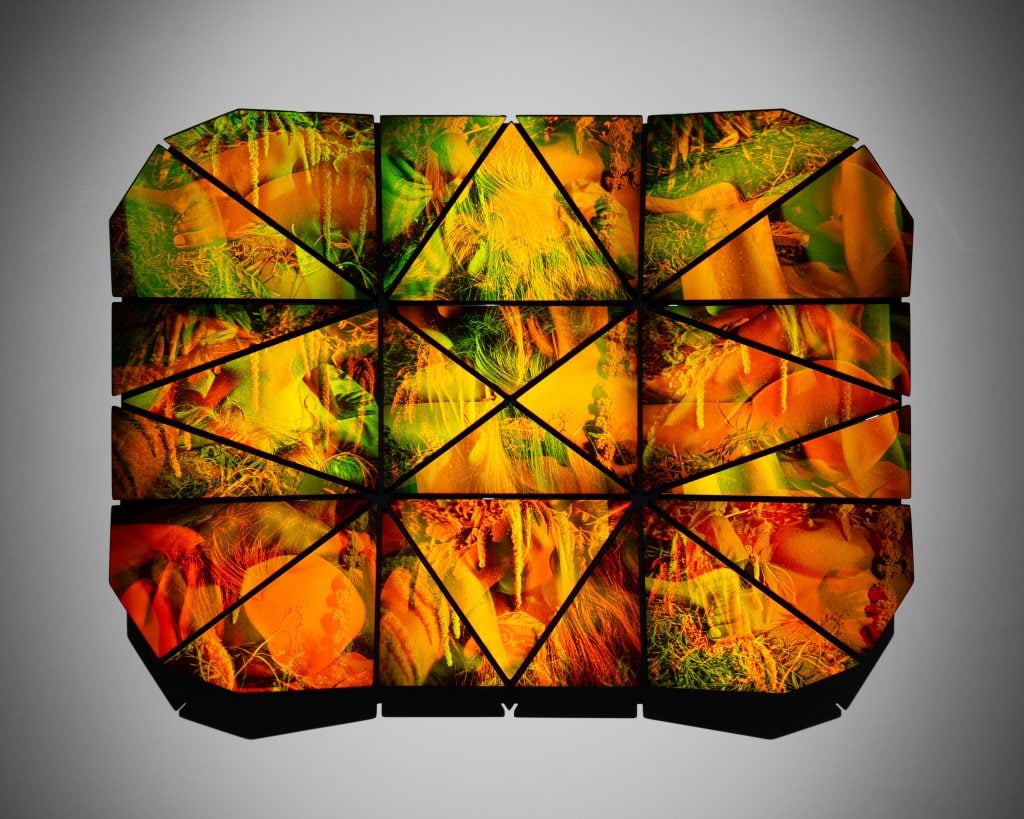
Sarah Meyohas, Interference #19 (2023). Photo: Lance Brewer. © Sarah Meyohas. Courtesy of the artist and Marianne Boesky Gallery, New York and Aspen.
These new pieces trail Meyohas’s other experiments with high-end tech, whether with the blockchain or A.I. But hers have never been idle pursuits of technology; instead, they are attempts to lift the lid on the true nature and ramifications of such innovations—what it might mean to financialize art (as in 2015’s Bitchcoin), or algorithmize beauty (as in 2017’s “Cloud of Petals“). This has entailed turning to “a different type of engagement with technology,” she said.
With her latest works, she sought to create “pieces that are fundamentally optical, requiring your physical presence,” she noted, as opposed to work that could be “absorbed” by trending discussions of virtuality or generative A.I.
And Meyohas’s own engagement with holographic tech runs far beyond the refractive surfaces. While discussing the works, she excitedly detailed the technique of turning every pixel of her photographs into a value for the machine gratings, and the dilemma of whether or not to laminate the glass panes. “I get off on that,” she said of the rather nerdy process.
“I hope people will see the difference, but I’m not entirely sure that they will,” she added of her upscale holograms. “They’ll be like, ‘Oh, it changes color, fun,’ you know? But it’s okay if they don’t because I just had to make it.”
“Sarah Meyohas” is on view at Marianne Boesky, 509 West 24th Street, New York, through June 30.
